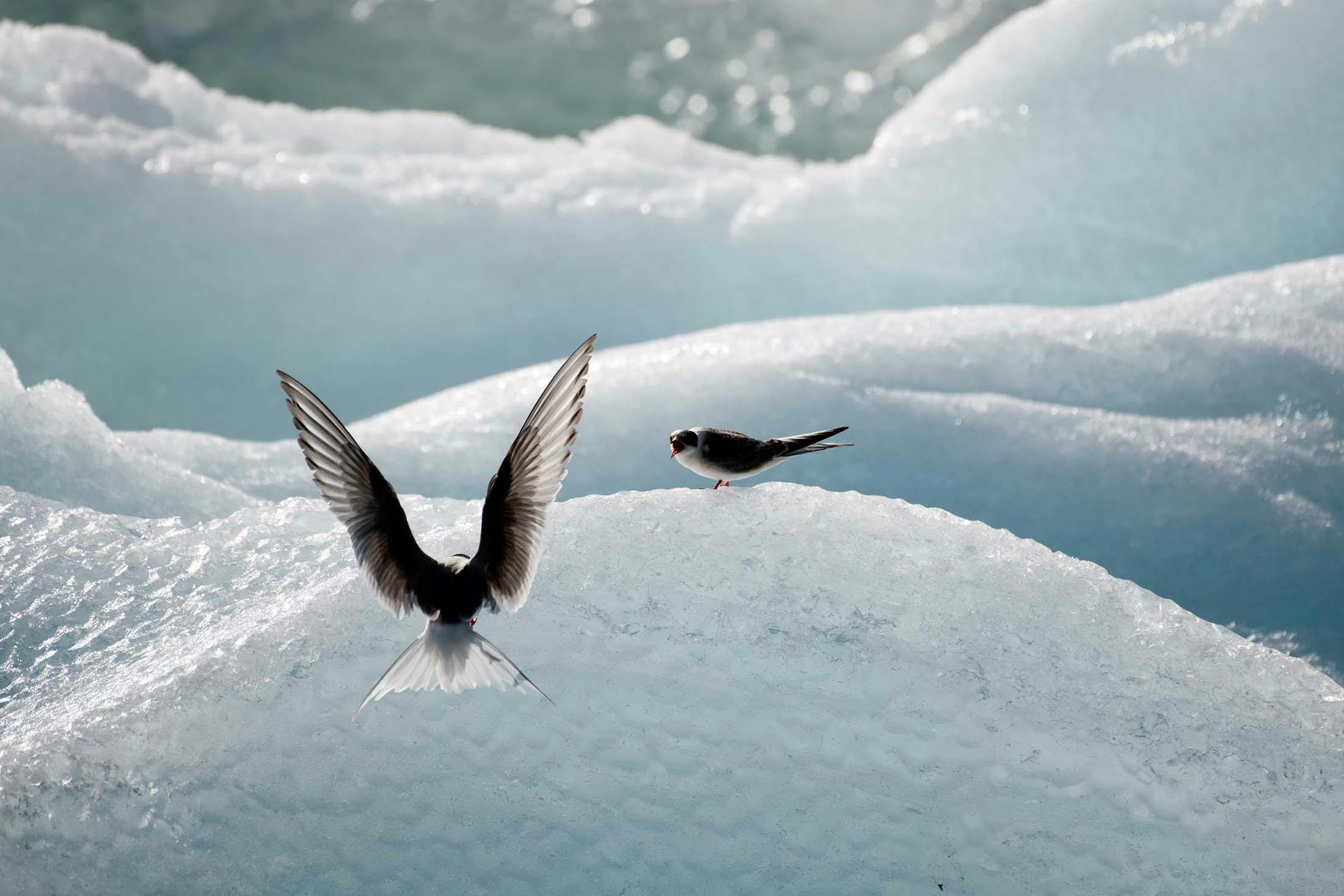Why the Arctic Tern is Nature’s Fiercest Parent
While, at first glance, it might appear to be a rather unassuming bird, the Arctic Tern stands out among all others for several remarkable reasons. It migrates further than any other animal species on Earth—not just birds — flying from the Arctic to Antarctica for breeding and feeding, respectively, and back again. Every year. But, for many keen ornithologists, it is the bird’s caretaking behavior that best defines its character: Arctic Terns are fierce parents. When it comes to protecting their young, the Arctic Tern has every hovering parent convincingly beat.
Never Judge a Bird by Its Cover
Behind the Arctic Tern’s diminutive frame beats the heart of a warrior. The birds grow up to 15 inches (38 centimeters) long, with an entirely black crown sitting atop an all-white body. Bright orange legs and a matching beak pop out against the bird’s monochromatic motif. While in flight, their sharply pointed feathers give the impression of their potential ferocity.

Arctic Terns, both mother and father, will put themselves in mortal danger should perceived predators get even just a little bit too close to their hatchlings. “Arctic Terns are particularly good at diving down with mock attacks on threats,” explains Ornithologist and Silversea Expedition Expert Malcolm Turner. “They scream and circle up and dive again. The terns have very sharp beaks that extend foremost as they dive.” Though the birds often aim their beaks at the tops of people’s heads or the backs of their necks, most are able to flee before the birds make contact.
Terns are so ferociously protective because they build their nests in the ground, blending into the short brush of the arctic and sub-arctic tundras where they live. “Trees and bushes are not suitable for nesting,” shares Turner. “As with most seabirds, terns have webbed feet that encase toes that do not bend around perches, such as branches.” And without the specialist skills needed for cliff breeding, as seen in other birds who share their ecosystem, evolution steered terns in a different direction. “Nesting in the open with no or very short grass and herbs allows the parent birds to see any predator approaching,” says Turner, thus explaining why terns are such experts at defending their little families.

Stick to the Road
“Attacks are triggered by any medium to large animal approaching the nest. They do not distinguish between a hunting predator and a large herbivore, like a reindeer,” Turner shares. Arctic Terns head to Iceland and other northern locales along similar latitudes to start their families. When visiting these destinations, it’s crucial to understand their nesting behavior and the lengths they go to defend their homes. It’s the first step in reducing conflict with them when visiting popular destinations.
No one wants to tread on a hidden nest on the ground accidentally. Fortunately, Arctic Terns are adept at making their location well-known before that could even happen. All we, as humans, need to do is listen to their message. Generally, it’s best to stick to the roads instead of cutting through the grassy fields. And if you witness someone heading into nesting territory, advise them against it.

Arctic Terns: You See Them, Now You Don’t
Arctic Terns’ eggs have a light green hue and brown speckles, meaning they easily blend into the Arctic environment around them, which protects them from predators. It can therefore be hard to spot one underfoot before it’s too late. It also doesn’t help that the nests typically look like loose depressions of dried grass.
Understanding this bird’s defensive parenting behavior is the key to observing them correctly. During visits to Iceland, Greenland, Svalbard, or other Arctic Tern habitats during spring and summer nesting times, it’s essential to keep your distance from the animals. “The adults get stressed and use up energy and time defending their nest from people coming too close,” Turner explains. Many cold climate species can’t waste a day’s energy on defense from a false predator, and it’s more enjoyable to watch them as happy animals, anyway.
Back away slowly if you do get too close—the parents will be quite clear about how they feel about your proximity, whether you’re aware of the nest or not. “Once the screaming stops and the birds stop flying in an erratic way, it is OK,” Turner adds. “Keep watching the adult birds, and you may see them return to the nest and chicks.” Parenting is tough for any species, humans included. When it comes to the Arctic Tern, however, it’s best to keep your distance and observe their parenting prowess from afar.
Choose your Arctic cruise today.

